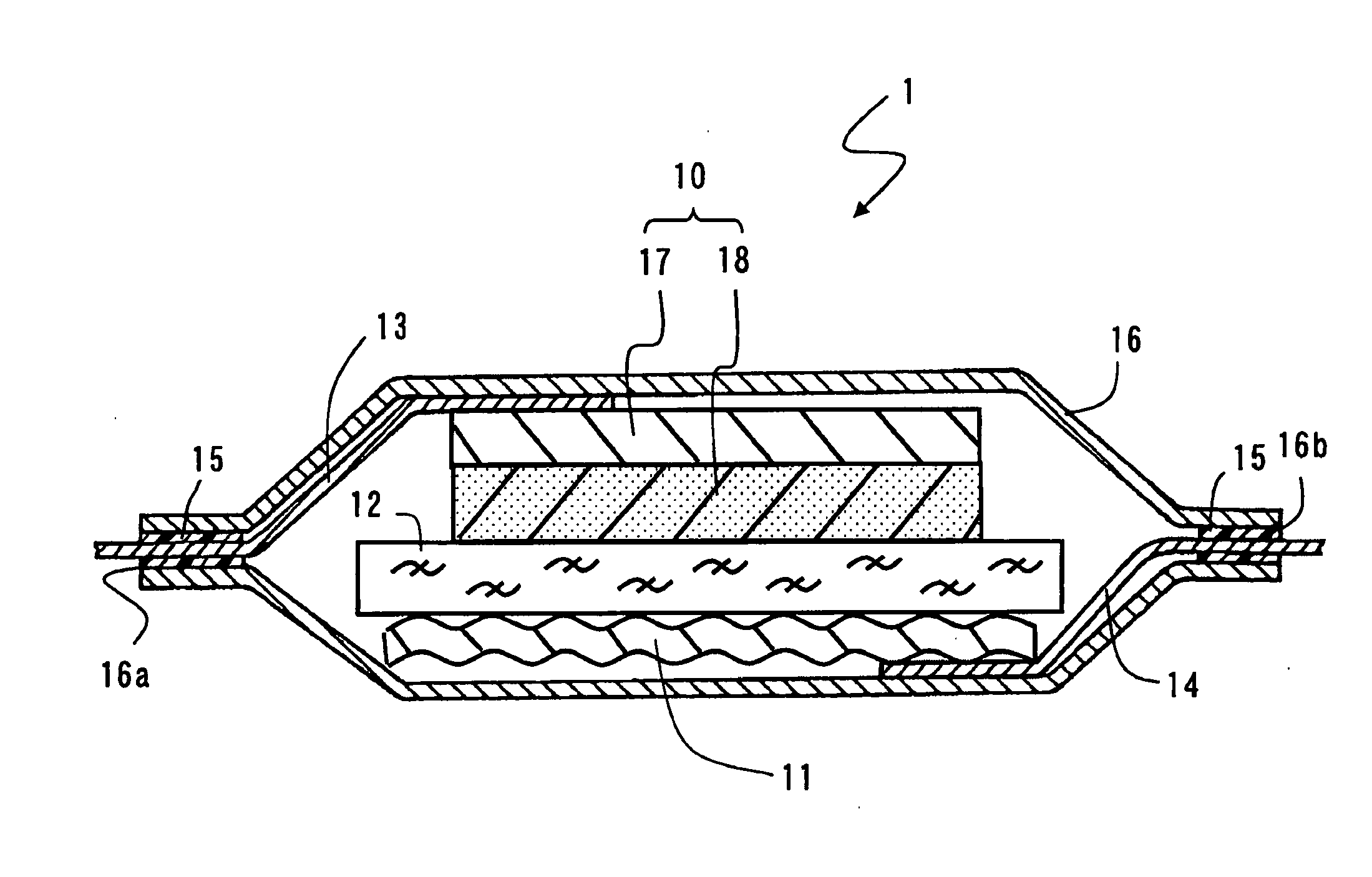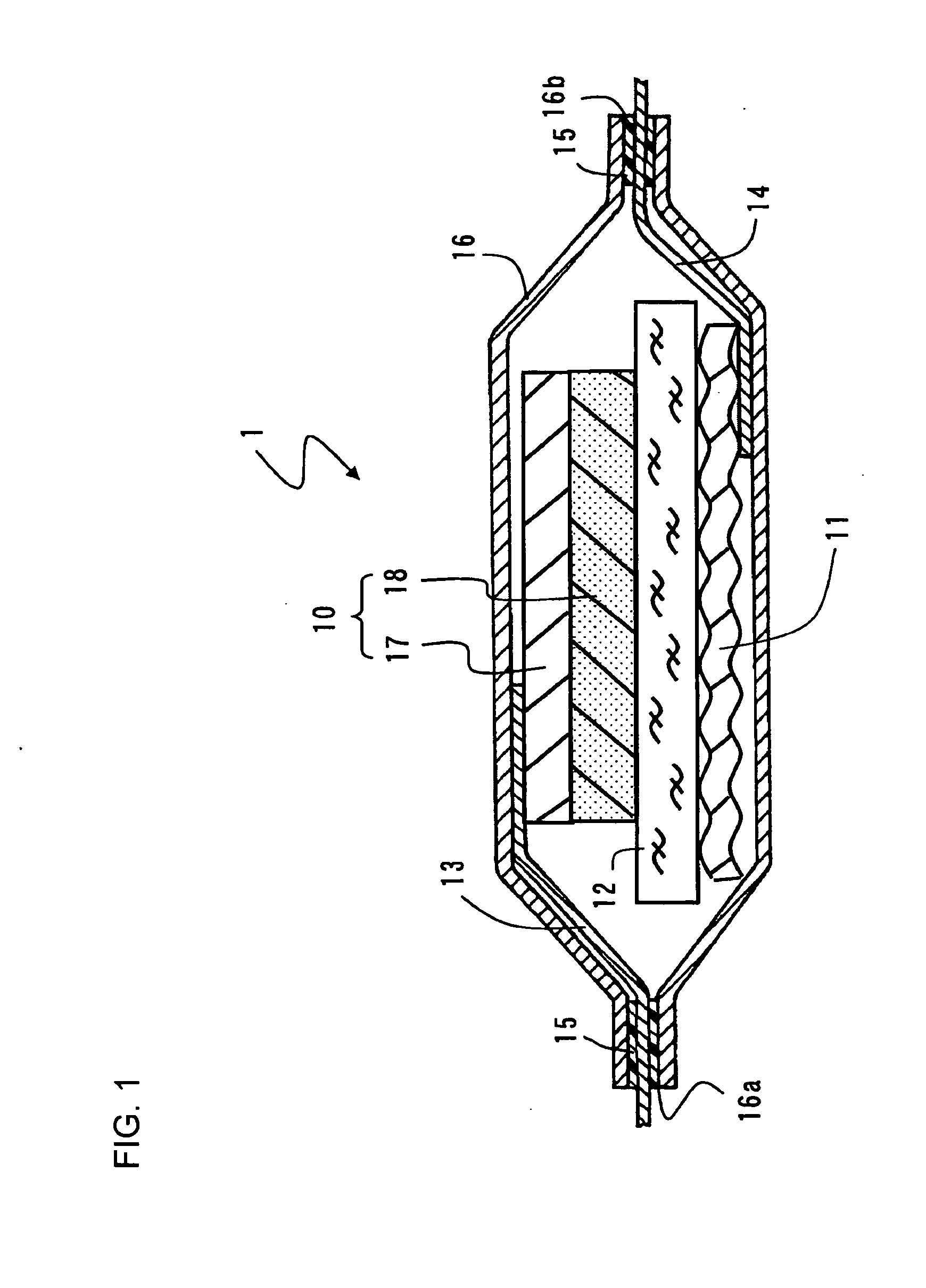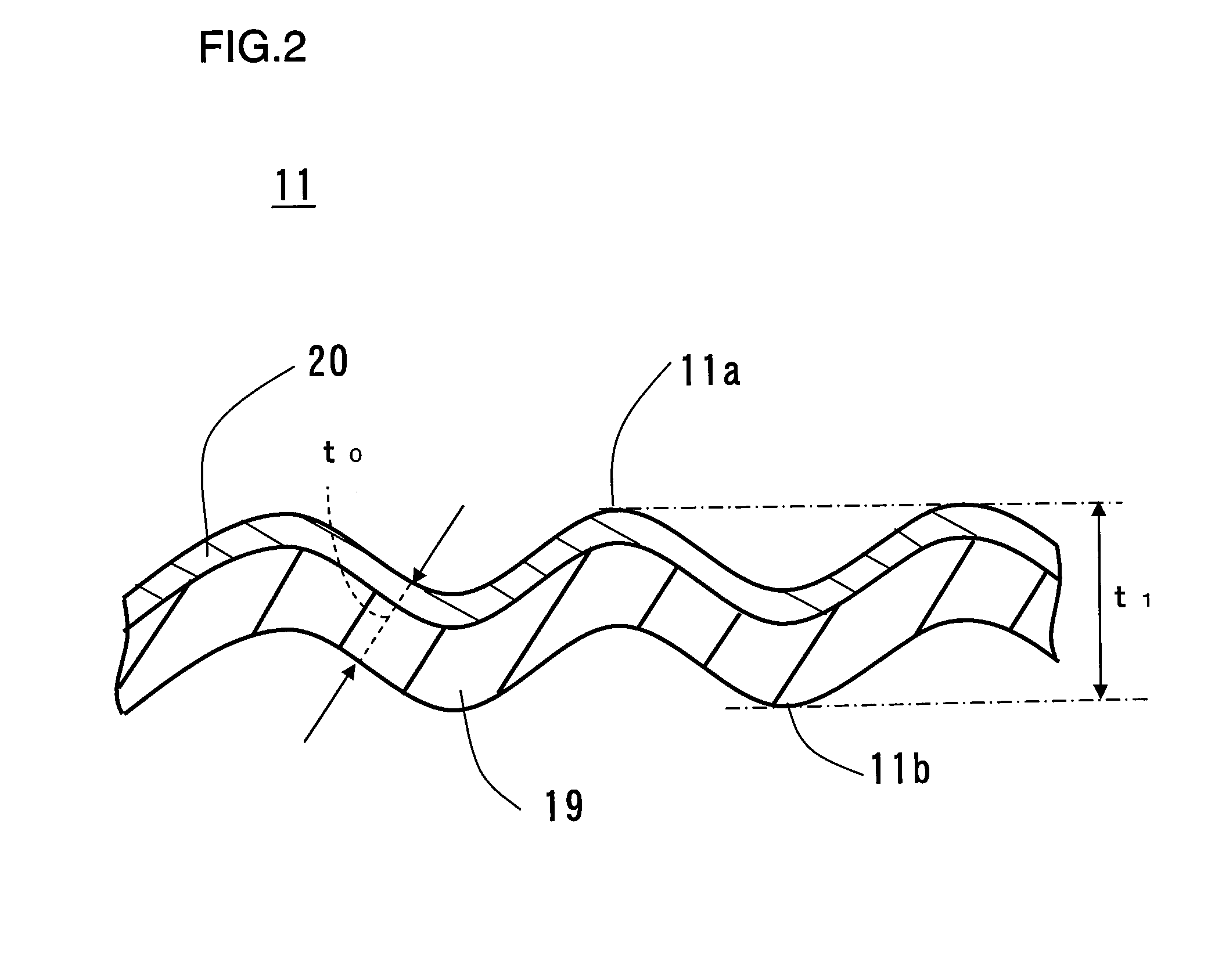Negative electrode current collector for lithium ion secondary battery, negative electrode for lithium ion secondary battery, and lithium ion secondary battery
a lithium ion secondary battery and negative electrode technology, applied in the direction of electrochemical generators, cell components, cell components, etc., can solve the problems of generating joule's heat, generating large amounts of heat, and batteries using alloy-type negative electrode active materials, etc., to achieve high power and high capacity
- Summary
- Abstract
- Description
- Claims
- Application Information
AI Technical Summary
Benefits of technology
Problems solved by technology
Method used
Image
Examples
example 1
(1) Preparation of Positive Electrode
[0121]A positive electrode mixture paste was prepared by sufficiently mixing 10g of lithium cobaltate (LiCoO2), 0.3 g of acetylene black (conductive agent), 0.8 g of polyvinylidene fluoride powder (binder), and 5 ml of N-methyl-2-pyrrolidone (NMP). This positive electrode mixture paste was applied onto one face of a 20-μm thick aluminum foil (positive electrode current collector), dried, and rolled to form a positive electrode active material layer. This was then cut into a square of 30 mm×30 mm, to obtain a positive electrode.
[0122]In the positive electrode thus obtained, the positive electrode active material layer carried on one face of the aluminum foil had a thickness of 70 μm and a size of 30 mm×30 mm. An aluminum positive electrode lead was connected to the face of the aluminum foil opposite the face on which the positive electrode active material layer was formed.
(2) Preparation of Negative Electrode
[0123]A rolled copper foil (thickness 3...
example 2
[0136]In the same manner as in Example 1, a negative electrode active material layer was formed as an aggregate of columns formed on the surfaces of the protrusions on the surface of the negative electrode current collector, except that among the deposition conditions of the negative electrode active material, the oxygen flow rate from the nozzle was set to 29 sccm, the angle α to 56°, and the deposition time to 35 minutes. These columns were grown slantwise relative to the direction perpendicular to the surface of the negative electrode current collector. The thickness of the negative electrode active material layer was 20 μm, and the volume ratio A / B was 1.6 or more. Also, the composition of the compound constituting the negative electrode active material layer was SiO0.7.
[0137]Next, under the same conditions as those of Example 1, lithium metal was deposited on the surface of the negative electrode active material layer, to produce a negative electrode (not subjected to a corruga...
example 3
[0138]In the same manner as in Example 1, a negative electrode active material layer was formed as an aggregate of columns formed on the surfaces of the protrusions on the surface of the negative electrode current collector, except that among the deposition conditions of the negative electrode active material, the oxygen flow rate from the nozzle was set to 32 sccm, the angle α to 530, and the deposition time to 31 minutes. These columns were grown slantwise relative to the direction perpendicular to the surface of the negative electrode current collector. The thickness of the negative electrode active material layer was 20 μm, and the volume ratio A / B was 1.6 or more. Also, the composition of the compound constituting the negative electrode active material layer was SiO0.7.
[0139]Next, under the same conditions as those of Example 1, lithium metal was deposited on the surface of the negative electrode active material layer, to produce a negative electrode (not subjected to a corruga...
PUM
 Login to View More
Login to View More Abstract
Description
Claims
Application Information
 Login to View More
Login to View More - R&D
- Intellectual Property
- Life Sciences
- Materials
- Tech Scout
- Unparalleled Data Quality
- Higher Quality Content
- 60% Fewer Hallucinations
Browse by: Latest US Patents, China's latest patents, Technical Efficacy Thesaurus, Application Domain, Technology Topic, Popular Technical Reports.
© 2025 PatSnap. All rights reserved.Legal|Privacy policy|Modern Slavery Act Transparency Statement|Sitemap|About US| Contact US: help@patsnap.com



